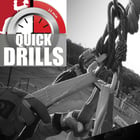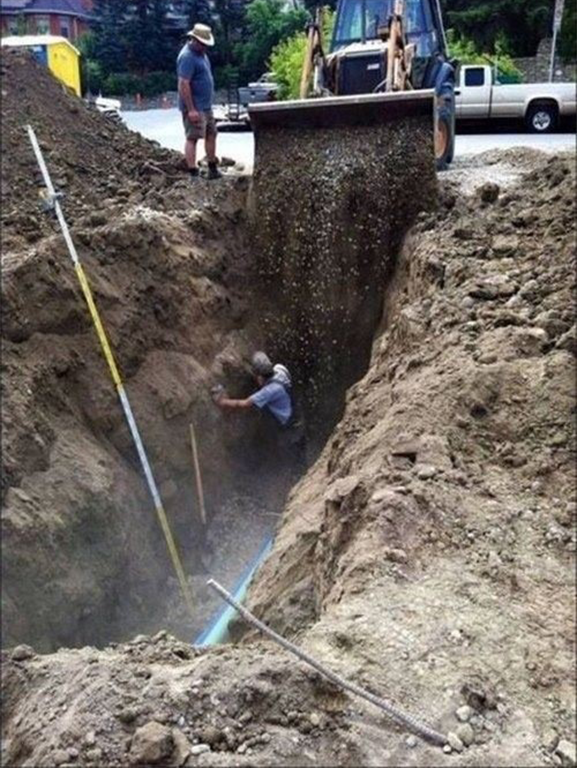 "Confined Spaces in Construction: Communication is Key!" will be the subject of a presentation by Roco's VPP Coordinator Pat Furr at the upcoming Region VI-VPP conference. The VPPPA Region VI Annual Safety & Health Conference will be held on May 16-19, 2016, at the Fort Worth Convention Center.
"Confined Spaces in Construction: Communication is Key!" will be the subject of a presentation by Roco's VPP Coordinator Pat Furr at the upcoming Region VI-VPP conference. The VPPPA Region VI Annual Safety & Health Conference will be held on May 16-19, 2016, at the Fort Worth Convention Center.
Presentation times are:
Tuesday, May 17th @ 11:30 a.m.
Wednesday, May 18th @ 8:30 a.m.
This presentation will draw parallels and differences between the general industry and construction industry regulations for permit required confined space operations. Although there are similarities between the two regulations, there are also some very important differences.
We are still seeing fatalities in the construction industry that are directly attributable to poor coordination and communication and this presentation will go a long ways in clarifying those critical needs.
In addition to discussing some new definitions, and in particular the addition of some new roles and responsibilities, the need for clear coordination and communication between the various contractor entities will be emphasized.
Visit with Pat, Aimee and Chanie at Roco's Booth #506
Click the picture to d ownload our Confined Spaces in Construction safety poster.
ownload our Confined Spaces in Construction safety poster.

 Petzl has reported a couple of instances where cracks may have developed over time in the arms of the ASAP LOCK (B71 ALU). While a cracked arm presents no additional immediate risk to the user, as with any personal protective equipment (PPE), the presence of such a crack requires immediate retirement of the device. In the unlikely event that someone finds an ASAP LOCK displaying cracks, Petzl America will replace these units under their standard product warranty.
Petzl has reported a couple of instances where cracks may have developed over time in the arms of the ASAP LOCK (B71 ALU). While a cracked arm presents no additional immediate risk to the user, as with any personal protective equipment (PPE), the presence of such a crack requires immediate retirement of the device. In the unlikely event that someone finds an ASAP LOCK displaying cracks, Petzl America will replace these units under their standard product warranty. One of the skills that separates a good team from a great team is patient handling; how quickly and efficiently a patient can be packaged for movement. Patient packaging and lashing is one area that can save a lot of time during a real rescue. This becomes even more critical when rescuers are wearing SCBA. Good patient packaging skills can significantly reduce the time rescuers and the patient are exposed to hazards.
One of the skills that separates a good team from a great team is patient handling; how quickly and efficiently a patient can be packaged for movement. Patient packaging and lashing is one area that can save a lot of time during a real rescue. This becomes even more critical when rescuers are wearing SCBA. Good patient packaging skills can significantly reduce the time rescuers and the patient are exposed to hazards.


 Back in the day, most sites typically only offered fire brigade training for their emergency responders. Eventually, medical was added, then hazmat, and finally confined space rescue – primarily in response to OSHA 1910.146. And, with permit-required confined spaces, most often comes the need for high angle rescue abilities as well. Once a victim is removed from a confined space, there is generally the need for raising or lowering the victim to ground level for medical transport.
Back in the day, most sites typically only offered fire brigade training for their emergency responders. Eventually, medical was added, then hazmat, and finally confined space rescue – primarily in response to OSHA 1910.146. And, with permit-required confined spaces, most often comes the need for high angle rescue abilities as well. Once a victim is removed from a confined space, there is generally the need for raising or lowering the victim to ground level for medical transport. Suspended Worker Rescue (Rescue from Fall Protection)
Suspended Worker Rescue (Rescue from Fall Protection) Trench Rescue
Trench Rescue Machinery Entrapment Rescue
Machinery Entrapment Rescue
 Building Collapse Rescue for First Responders
Building Collapse Rescue for First Responders


